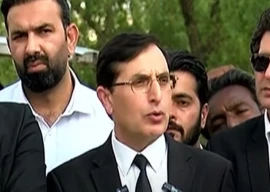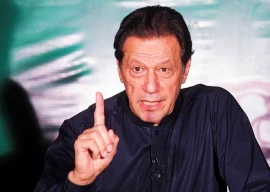
I learnt that there was silence after India’s victory. That is understandable. Both sides were so well balanced that any one of the two could have won. Yet the matter doesn’t end there. We should make a gesture in the bonhomie atmosphere which was built after the meeting between Indian Prime Minister Manmohan Singh and his Pakistani counterpart, Yousaf Gilani.
My proposal is that the Indian cricket team should play a charity match in Lahore to raise money for Pakistan’s flood victims. This would be the best way to promote people-to-people contact. Visas should be relaxed on match day and Pakistan should reserve at least 10 thousand seats for visiting Indians.
I did not expect such a rapid change in the atmosphere when I led a delegation of 12 members, including Mahesh Bhatt, member of parliament Bhalchandra Mungekar and editor Shahid Siddiqui, to Pakistan, from March 17 to March 27. Not a single friend supported me and no one from my family wanted me to take the trip. The comment was that it was a waste of time and that Pakistan should be taught a lesson through a policy of indifference. There were also warnings that the terrorists might strike at the delegation.
Nothing like this happened. In fact, we were surprised by how normal life was, despite the fear with which people lived constantly. They were visibly happy and effusive in their statements on relations between India and Pakistan. It looked as if the nation wanted to be pulled out of the quagmire of neglect, terrorism and helplessness in which it is stuck. India is seen as a country that could help them through trade and travel. America is seen as enemy number one.
Karachi was our first stop. Unemployment is high there, although being a commercial centre, the city has more job opportunities than any other in Pakistan. Many young boys and girls are engaged in voluntary work, particularly in the social field. They speak in very affectionate tones when they talk about the equation with India.
Karachi is a media centre; 100s of channels are there. They are independent but two subjects are taboo; the military and the Taliban. As we travelled through Pakistan, we found a tinge of fundamentalism creeping in, even in high echelons of society. Religion is more dominant than it has ever been.
Islamabad was cleaner, less tense and excessively guarded. Our delegation was fortunate to attend the joint opening session of the National Assembly and the Senate. This is where we heard President Zardari saying that Pakistan would not allow its soil to be used for attacks on another country.
The old Quaid-i-Azam University is still a centre of dissent. Liberal Pervez Hoodbhoy is very much there criticising the establishment. But he warned India, that Pakistan is not going anywhere despite reports that it could collapse at any time. Very few students sported beards. And only a few women had their faces covered by niqab.
Islamabad is Pakistan’s political capital. Despite wide differences, the various parties have arrived at some sort of consensus to let the government function. Zardari has been able to keep the Gilani administration going, although the ruling Pakistan Peoples’s Party (PPP) is not in a majority. The illness of Nawaz Sharif has averted the political crisis for the time being, but I see a midterm poll by the end of this year.
Our final destination was Lahore. I found students at LUMS, a counterpart of our top business school, very interested in India and the curriculum it offered to Pakistani students. The founder of the school, Baber Ali, complained that they wanted Indian faculty to teach at LUMS, but no one wanted to come. However, there was deathly silence when I said that on the one hand you want friendship with India, but on the other you teach distorted history and prescribed books in elementary schools that depict Hindus as dushman.
Published in The Express Tribune, April 5th, 2011.
COMMENTS (62)
Comments are moderated and generally will be posted if they are on-topic and not abusive.
For more information, please see our Comments FAQ



















1713889672-1/Plastic-waste-(2)1713889672-1-270x192.webp)























Mr.Biju patnaik was a great leader and was given the "Bhumiputra" award by Indonesia gov for saving Sukorno's life.But why do u consider him as a criminal???